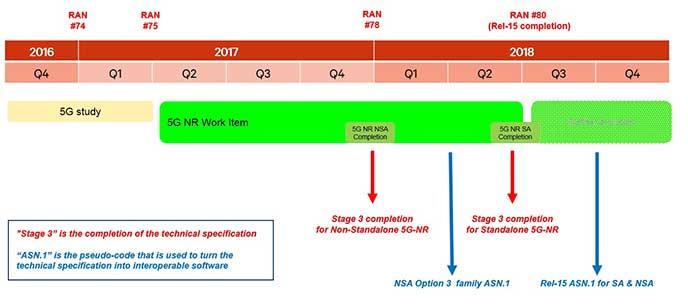
5G is closer than ever after a fruitful early March meeting of global standardization group 3GPP saw over 40 members agree to a plan to accelerate the deployment of 5G New Radio (the global 5G standard) towards 2019.
Qualcomm’s vice-president of technical standards and 3GPP lead at the company, Lorenzo Casaccia, told MobileSyrup that two main factors contributed to the acceleration, the first being a sudden demand from wireless operators.
“The appetites grew in the past nine months,” said Casaccia.
The second factor, Casaccia noted, is the technological capability of rolling out an LTE-supported 5G non-standalone network through the use of carrier aggregation.
Carrier aggregation simplified
For those unfamiliar with the term, carrier aggregation refers to the practice of aggregating different pieces of spectrum together in order to provide more robust speeds and service. Because there’s a limit to available spectrum, and most operators own multiple pieces of spectrum, the practice is a clever way of making the most of what they have.
Carrier aggregation can also make use of unlicensed spectrum — meaning spectrum not licensed to mobile operators. Though unlicensed spectrum may sound like the wild west of wireless, it’s actually in use by common technologies such as Bluetooth, Wi-Fi and remote controls, and not completely unregulated (lest a spectrum hog render it unusable to everyone else).
Non-standalone 5G allows for the potential of a 2019 deployment — far before the expected 2020 arrival date.

“The initial informal target was 2020 and the Tokyo Olympics,” said Casaccia.
Additionally, the non-standalone deployment makes the most sense for a smooth transition into the multi-Gigabit speeds and super-low latency promised by 5G by mobile operators. Standalone 5G (or a full 5G network with no LTE anchor) is also in the works, with Casaccia giving the use example of a private network where the users might not be humans but machines — in a large-scale connected factory, for instance.
The importance of looking ahead
Casaccia says that the plan for deployment acceleration was in the works for about a year, and hinged on decisions related prioritizing future compatibility.
“By this we mean that we are going to accelerate, but this would not be to the detriment of subsequent versions,” said Casaccia, adding that previous generations of wireless technology were not designed with that idea of forward compatibility.
“We were confident we knew how to do that,” said Casaccia, “But some time was needed to bring the industry together around that notion.”
In order to move towards the early 2019 deployment, 3GPP must deliver the Release 15 technical specifications for both non-standalone and standalone 5G NR, detailed in the project plan. The target for non-standalone, Casaccia noted, is completion by the end of 2017.


